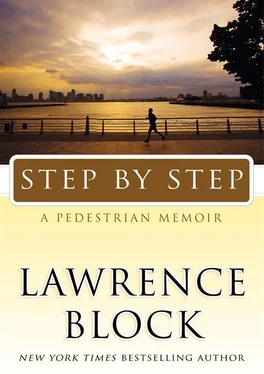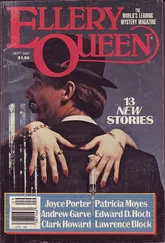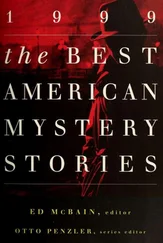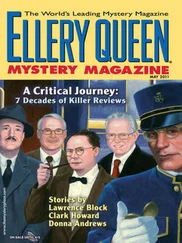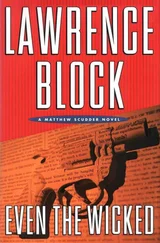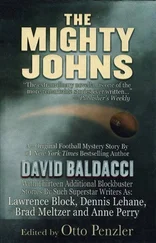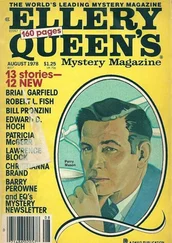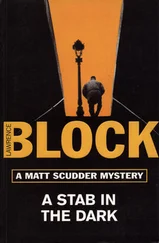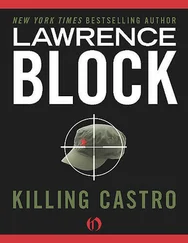Lawrence Block - Step by Step
Здесь есть возможность читать онлайн «Lawrence Block - Step by Step» весь текст электронной книги совершенно бесплатно (целиком полную версию без сокращений). В некоторых случаях можно слушать аудио, скачать через торрент в формате fb2 и присутствует краткое содержание. Год выпуска: 2009, ISBN: 2009, Издательство: William Morrow, Жанр: Биографии и Мемуары, Юмористические книги, на английском языке. Описание произведения, (предисловие) а так же отзывы посетителей доступны на портале библиотеки ЛибКат.
- Название:Step by Step
- Автор:
- Издательство:William Morrow
- Жанр:
- Год:2009
- ISBN:978-0-06-172181-6
- Рейтинг книги:3 / 5. Голосов: 1
-
Избранное:Добавить в избранное
- Отзывы:
-
Ваша оценка:
- 60
- 1
- 2
- 3
- 4
- 5
Step by Step: краткое содержание, описание и аннотация
Предлагаем к чтению аннотацию, описание, краткое содержание или предисловие (зависит от того, что написал сам автор книги «Step by Step»). Если вы не нашли необходимую информацию о книге — напишите в комментариях, мы постараемся отыскать её.
bestselling author comes a touching, insightful, and humorous memoir of an unlikely racewalker and world traveler.
Step by Step — читать онлайн бесплатно полную книгу (весь текст) целиком
Ниже представлен текст книги, разбитый по страницам. Система сохранения места последней прочитанной страницы, позволяет с удобством читать онлайн бесплатно книгу «Step by Step», без необходимости каждый раз заново искать на чём Вы остановились. Поставьте закладку, и сможете в любой момент перейти на страницу, на которой закончили чтение.
Интервал:
Закладка:
Early on, every village church had a stork’s nest on its top. Sometimes we’d see the birds visiting the nests, but at the very least we’d spot the big nest, crowning the steeple. All through Catalonia and Aragon, all through Navarre—
And then, somewhere along the way, we stopped seeing either the birds or their nests. And we never could figure out why.
Had the storks, for presumably sound reasons of their own, never nested atop the churches of Castile and León? Or had some human agency contrived to drive them away? Had the municipal or ecclesiastic authorities dispatched men with brooms to sweep the nests away? Were chemical pesticides at the root of the problem? Or — and here’s a thought that never occurred to us at the time, but seems inescapable now — could it be global warming?
The birth rate in Spain, as in much of Western Europe, has been declining in recent years. But that has to be a coincidence, don’t you think?
I’m sure the trip would have been a birder’s delight, not least because we did so much of our walking in the early morning hours when early birds are loading up on tardy worms. But we didn’t pay much attention to the birds, except when they were impossible to miss. Like the storks, which we saw all the time until we stopped seeing them at all, and like the eagles.
We only saw eagles once, but they made an impression. We were walking on a road through a field, somewhere in Navarre, when we saw a flight of enormous birds hovering over a flock of sheep. The Basque shepherd was scurrying around, brandishing his staff, flailing at the birds with it. They were eagles, though it took us a moment to realize that; they lacked the white heads of the American Bald Eagle, and they looked too large to be eagles, although they could hardly have been anything else. We didn’t count them, but their number clearly ran to more than a dozen, and there may have been as many as twenty of them, all swooping around in a manner that was so graceful it took you a minute to realize how menacing they were.
They wanted a lamb or two, and the poor shepherd clearly wanted an AK-47. All he had was his shepherd’s crook, and all he could do was wave it around while his dog did all it could do, which was bark. It seemed to work, at least for the moment; the eagles soared off, leaving him with his sheep. And we walked on, by no means convinced he and the sheep had seen the last of those birds.
We had, however. Never spotted them again. More recently, we saw quite a few bald eagles in the Aleutians, and they’re spectacular birds. But I think the species we encountered in Spain ran larger.
It was poppy season when we began our walk, and the fields of Catalonia and Aragon were a vast sea of scarlet. They took us entirely by surprise. I knew they had poppies in Europe, and specifically in Belgium. I remembered the John McCrae poem:
In Flanders fields the poppies blow
Between the crosses row on row,
That mark our place; and in the sky
The larks, still bravely singing, fly
Scarce heard amid the guns below.
We are the dead. Short days ago
We lived, felt dawn, saw sunset glow,
Loved and were loved, and now we lie
In Flanders fields.
Take up our quarrel with the foe:
To you from failing hands we throw
The torch; be yours to hold it high.
If ye break faith with us who die
We shall not sleep, though poppies grow
In Flanders fields.
So I knew there were poppies in World War I cemeteries, but I guess I figured someone planted them there. And when we saw the poppy fields in Spain, I assumed someone must have planted them, too — but why? As far as I knew, there was no large-scale cultivation of opium in Spain.
Well, duh, nobody plants those poppies. They plant themselves, self-seeding year after year, like dandelions in the United States, but if there are places back home where dandelions turn a whole hillside blindingly yellow, I’ve never seen them.
I’d never seen anything like those poppy fields. I wonder if the people who live among them pay any attention to them. Probably not. When something’s always there, you stop noticing it.
And what other sights did we see? One that made an indelible impression upon me was, in a sense, nothing at all remarkable. It was, in point of fact, something that happens everywhere, every day of the year. Yet it was fair to say we’d never seen anything like it.
I don’t remember the name of the town, but I happen to know the date when it occurred. It was June 25th, and I know that because the night before we were walking back to the refugio after our evening meal when we fell into conversation with a trio of teenage Spanish girls. They heard us talking and initiated the conversation, thinking it would be a fine opportunity for them to practice their English. And indeed it might have been, if they’d had any English to practice. Alas, they didn’t, so I seized the opportunity to practice my Spanish, and groped around for something to say.
“ Hoy es mi cumpleaños, ” I managed. How I remembered cumpleaños, which is Spanish for birthday , is beyond me; I’m pretty sure I’d never even spoken the word aloud before. The three little maids from school — las tres niñas de la escuela? — thought this was a wonderful thing — that it was my birthday, not that I’d managed to come up with the word for it — and they wished me well, and we wished them well, and that was about as far as either language would take us, so we left it at that.
They were in town, and speaking with strangers, because it was indeed a feast day, St. John’s Day, the festival of John the Baptist, who was the patron saint of the village. Back at the refugio, we went to sleep while the party was just getting started, and it was still dark, and some of the revelers still partying, when we woke up and got dressed and on our way.
We found our way out of town and resumed walking the Camino, and we hadn’t gone too far before we found ourselves with a mountain to climb. It wasn’t a mountain the way Kilimanjaro is a mountain, and I suppose I might more properly refer to it as a big hill, but there was a lot of it and it was fairly steep, and it took an effort to scale it, especially with heavy packs on our backs.
But we kept going, and eventually we stood at the top, and something prompted us to turn around and look back toward where we’d been. And just at that moment the sun broke the horizon, and we stood on that mountain peak — okay, hilltop — and watched it come all the way up.
As I said, it’s the sort of thing that happens all over the world, every day of the year. But right then and right there, it was one of the most wonderful sights either of us had ever seen.
The Boy Scout Jamboree in 1953 had got me interested in Spanish, and I’d taken to it in high school like a pato to agua . Given the opportunity, I’d have continued with it in college, but Antioch had ceased to offer it by the time I got there, and that was that.
Two years of high school Spanish had penetrated more deeply than one might have supposed, and all it ever took was a week or two in a Spanish-speaking country for much of my Spanish to return to me. I was a long way from fluent, however. My vocabulary was limited — though it amazed me how words would keep coming back to me like golondrinas to Capistrano, just popping back into my consciousness from some chamber of memory. I was pretty much confined to the present tense, if I’d ever learned the other tenses they hadn’t stayed with me, but you can conduct whole conversations in the present tense. Or write whole books, if you’re Damon Runyon, say, or some poseur from Iowa City.
Читать дальшеИнтервал:
Закладка:
Похожие книги на «Step by Step»
Представляем Вашему вниманию похожие книги на «Step by Step» списком для выбора. Мы отобрали схожую по названию и смыслу литературу в надежде предоставить читателям больше вариантов отыскать новые, интересные, ещё непрочитанные произведения.
Обсуждение, отзывы о книге «Step by Step» и просто собственные мнения читателей. Оставьте ваши комментарии, напишите, что Вы думаете о произведении, его смысле или главных героях. Укажите что конкретно понравилось, а что нет, и почему Вы так считаете.
